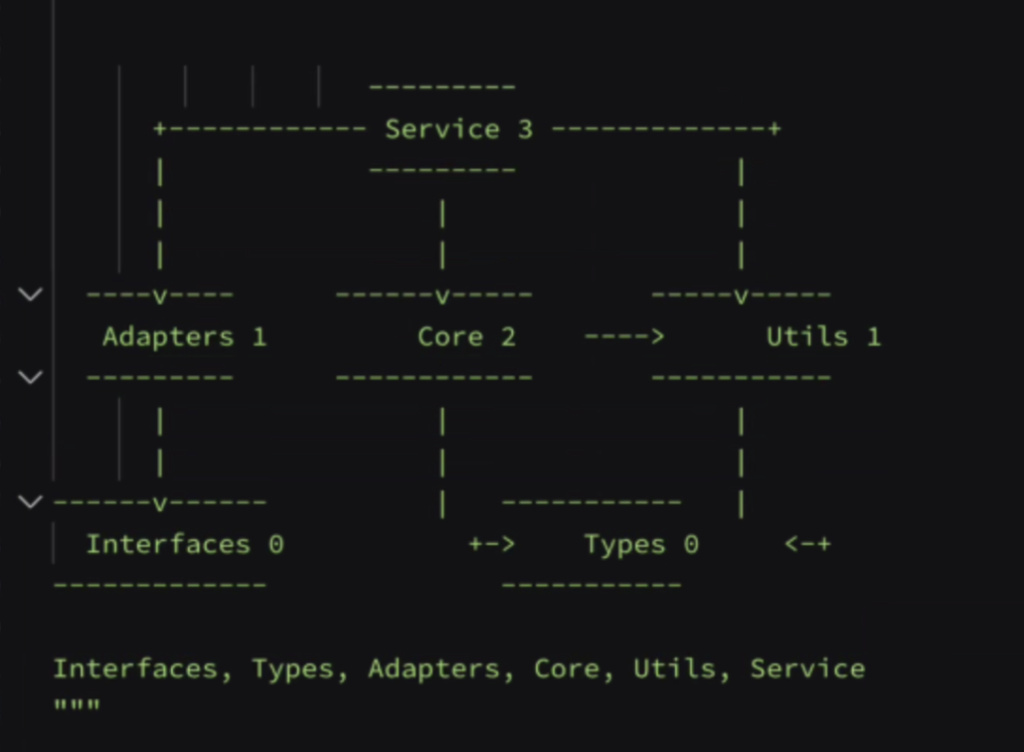In a recent Uber technical interview, our client faced a deceptively simple problem: determine the build order of package dependencies.
What appeared at first glance as a basic graph traversal question turned out to be a nuanced challenge in topological sorting — and our client, with csOAhelp's real-time support, successfully delivered a clean, robust solution that impressed the interviewer.
Here’s the full breakdown of the problem, our step-by-step assistance, and how it led to a successful outcome.
📄 Original Interview Question
“Given a package name, return the build order of its package dependencies.”
A dependency from package A to package B (A→B) means that package B must be built before A.
Example Dependency Graph:

Expected output:
css复制编辑["Interfaces", "Types", "Adapters", "Core", "Utils", "Service"]
🧠 Problem Summary
You're given:
- A target package name (e.g.
"Service") - A dictionary of dependencies where each key is a package and its value is a list of packages it depends on.
Return a build order list, such that all dependencies are built before the packages that depend on them.
💡 Correct Approach: Topological Sort (DFS-based)
This is a classic topological sorting problem, but with a twist: instead of sorting the entire graph, we must only compute the build order starting from the target package and including all its reachable dependencies.
✅ Real-time strategy we provided:
- Graph Modeling:
We structured the dependencies as a directed graph using an adjacency list. - Recursive DFS Traversal:
For each package, visit its dependencies recursively before adding it to the build list. - Avoiding Repetition:
We used avisitedset to prevent duplicate processing of packages. - Post-order Appending:
Since a package should be added only after its dependencies are processed, we append in post-order and reverse the result.
💻 Code Skeleton We Supplied Live
Here’s the actual DFS-based topological sort code we wrote and sent in real time during the interview:
def get_build_order(graph, target):
visited = set()
result = []
def dfs(node):
if node in visited:
return
visited.add(node)
for neighbor in graph.get(node, []):
dfs(neighbor)
result.append(node)
dfs(target)
return result[::-1]
🚨 What Happened During the Interview
At first, the candidate attempted to iterate over the entire graph and track dependencies manually — which risked missing indirect dependencies or producing incorrect order.
Once we stepped in:
✅ We immediately outlined the correct topological sort strategy.
✅ We sent clean, recursive DFS code with naming optimized for verbal explanation.
✅ We anticipated and prepped follow-up answers — including time complexity (O(n)) and cycle detection.
✅ We ensured each talking point matched the interviewer's expectations — no guesswork, no blank pauses.
Our backend team wrote and sent the full solution in real time, allowing the candidate to present it smoothly and confidently.
🎯 Interviewer Feedback
“I liked that you used post-order DFS — that’s how we do it internally.”
“Very readable structure. This would work well in production.”
The candidate successfully passed to the next round.
🚀 Real-Time Support That Works
This wasn’t luck. It wasn’t “scripted prep” either.
It was real-time code writing + answer scripting + logical scaffolding — tailored to the exact pace and flow of the live interview.
What csOAhelp provides isn’t a "hint" or a cheat sheet.
It’s full collaboration during the interview:
💻 Live code drafting
📎 Full explanations for every logical step
🎙️ Ready-to-say follow-up responses
🧠 Design of clear, interviewer-facing narratives
📩 You Don’t Get a Second Chance at Your Visa
For many candidates, a single failed interview means losing their only shot before their visa expires.
That’s why our clients trust us to be their backend team — live, on-demand, ready to make sure they get through.
👉 Let us write, think, and win with you.
📩 If you have an upcoming interview and don’t want to take risks — contact us.
Whether it’s Booking, Amazon, Meta, or TikTok, we can provide real-time support during your interview to help you complete the question, explain your reasoning, and leave a solid impression.
One interview might decide whether you get to stay.
We’re here to help you write every line of code and stabilize every step of the process.
